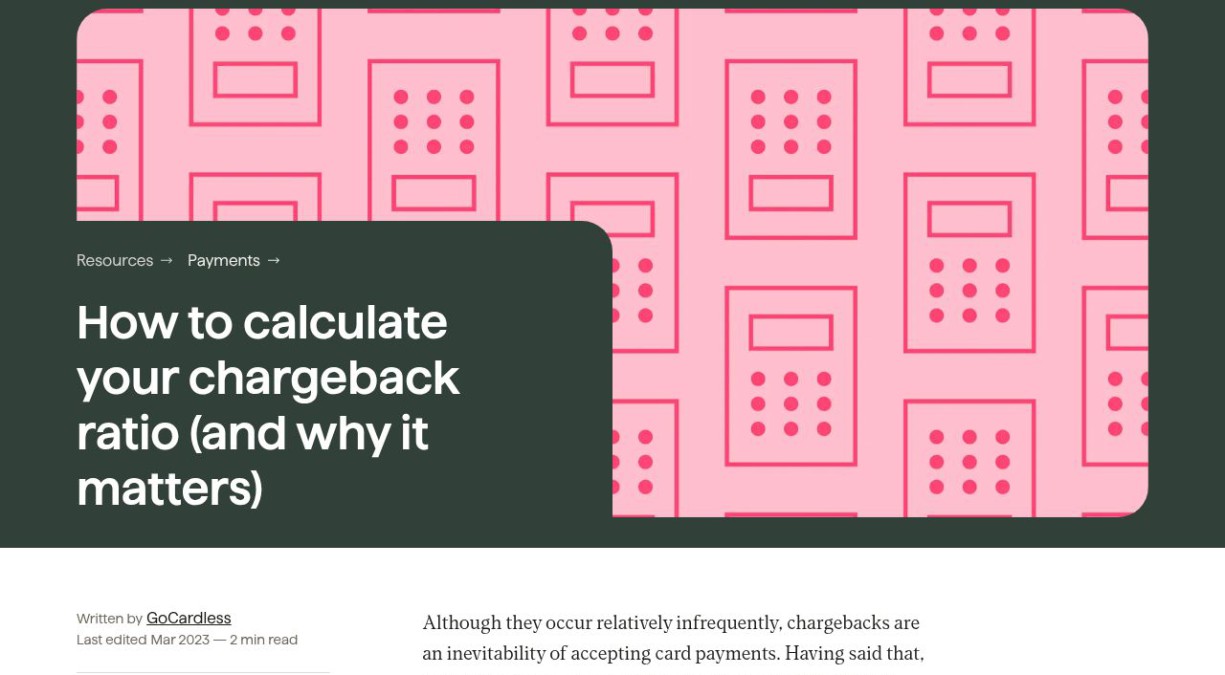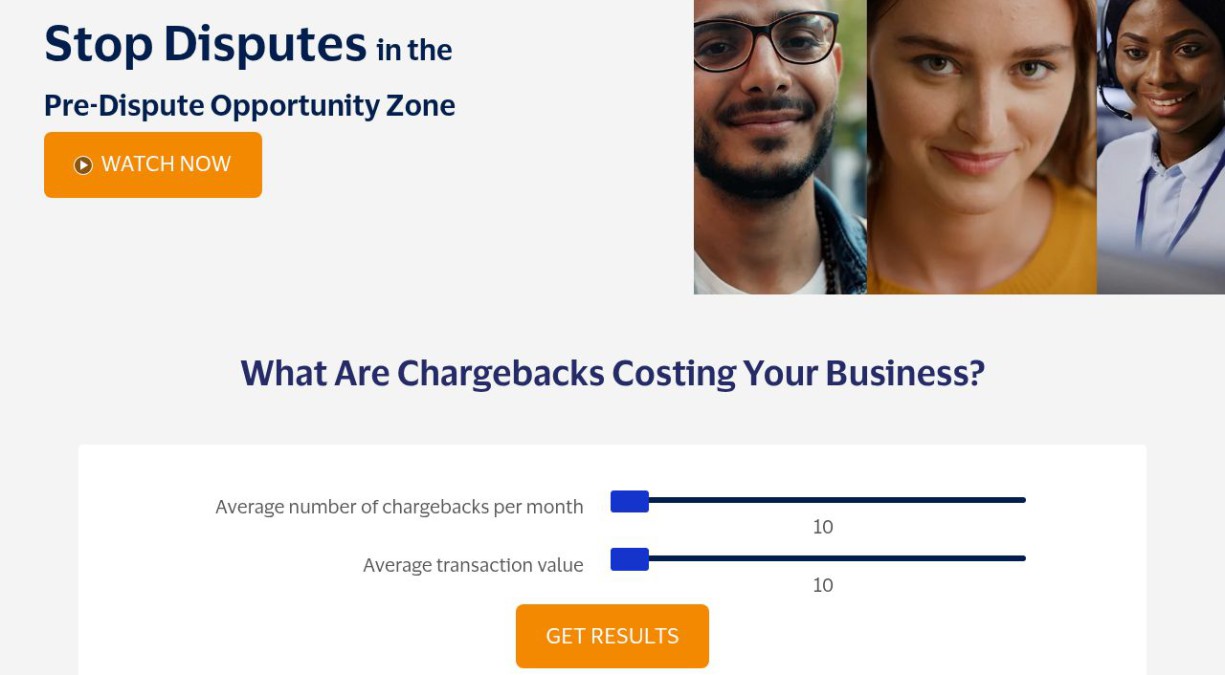What is a Chargeback Ratio?
Chargeback ratio measures how frequently transactions get disputed compared to total sales. Payment processors look at this number every month to decide if they should continue accepting credit card payments from the business.
Businesses get taken aback by how strict the limits are. Visa caps merchants at 0.65%, and Mastercard gives a bit more room at 1%. Those numbers sound small. But if a business is running any decent volume (processing a thousand transactions), just seven disputes can put them over Visa’s limit.
Each time a customer disputes a charge, the ratio climbs. Once that line gets crossed, the penalties kick in fast.
At first they put the merchant in a review program where they watch all transactions. Then fees start jumping – I’ve seen processors tack on anywhere from $25 to $100 per chargeback, and they’ll add percentage-based penalties too. If the situation doesn’t improve, they’ll freeze part of the money (usually 5-10% of everything processed) and sit on it for six months. If problems continue, they’ll shut down the account completely. And once that happens, the business lands on the MATCH list and means no processor will work with them for five years.
How It Works
So when you look at how Visa and Mastercard calculate chargebacks, it’s confusing at first. Visa counts chargebacks against sales from that same month. Let’s say that you had 14 chargebacks in March from 2,000 March sales – you’re at 0.7%.
Mastercard does something completely different. They take those chargebacks from this month and divide them by the previous month’s sales. Those exact same 14 chargebacks from March get measured against what you sold in February. Merchants usually get very different ratios from each card brand even though it’s all the same transaction data.
March chargebacks from items customers bought during the December holidays might blow you past Mastercard’s 1% threshold. But with Visa’s math, you’d still be fine at 0.7%. It’s the same merchant account, two completely different stories about your danger level.
What I do now is track each card brand’s ratio separately. Most payment processors will give you the details of chargebacks and sales by card company, though some make you look around in secondary reports or pull the data through their API.
You have to watch these numbers every month. Quarterly checks can make you miss crossing into watchlist program territory – not fun to find out after the fact.
How it Affects Chargeback Prevention
Your chargeback ratio is a strong signal when something’s going wrong in your business. I’ve seen merchants lose their accounts because they didn’t pay attention when those numbers started creeping up.
Payment processors watch these ratios because chargebacks cost them money and damage their relationships with card networks. So if the ratio starts climbing from 0.5% to 0.8%, you need to find out why right away. Once you hit 1%, the card networks automatically hit you with penalties and businesses spend months trying to dig themselves out.
Stay on top of these problems to save yourself from those brutal compliance programs Visa and Mastercard run – we’re talking $2,000 to $10,000 every month just in fees. Payment rates won’t suddenly spike by 50-100 basis points either. Cash flow stays steady and your merchant account doesn’t get shut down.
Merchants who track their ratios usually make basic changes. They’ll start answering customer emails in a few hours instead of letting them sit for days. They put fraud detection in place that catches about 30% of the sketchy transactions before they turn into chargebacks.
You can’t wait too long. Merchants trying to fix everything after they’re already in a penalty program are in a rough situation. They’re scrambling to make changes while paying higher fees, having money held in reserve, and processors watching every transaction. By then, the payment networks have already marked them as risky.
Example Scenarios
During peak vacation months, I’ve seen travel businesses watch their ratio climb to 0.9%. Visa starts paying attention at that threshold. But if you run a travel business, summer has its own chaos. Travelers book three different hotels, change their minds about destinations, or find out they can’t get time off work. It’s just how travel bookings work.
An online retailer had been cruising along at 0.3% for ages. Then they received a shipment of yoga mats that started peeling after one use. Their ratio shot to 0.8% practically overnight. They had to scramble – sending apology emails, processing returns, responding to angry Instagram posts. Some businesses never recover from something like that if they don’t move fast enough with refunds and replacements.
There’s this restaurant owner who holds their ratio around 0.15%. They print receipts for every order and their servers are trained to spot unhappy customers before they leave. If a customer’s steak is overcooked, they fix it right there. No unexpected disputes later.
The point is that 0.9% means completely different situations depending on your business. For that travel company, it’s Tuesday. For the yoga mat seller, it’s a five-alarm fire with customers posting one-star reviews everywhere.
Don’t panic about your numbers or start changing everything – find out what’s actually happening. Some businesses waste months fixing problems that weren’t problems – they just didn’t see their own patterns.
Some businesses naturally run higher. Online courses, subscription boxes, and adventure tour operators usually see higher ratios than the coffee shop down the street. That local restaurant with the owner who knows everyone’s name might stay under 0.5% forever.
Requirements and Timeframes
I’ve been working with payment networks for years now and something that still catches merchants off guard is how different Visa and Mastercard are with their chargeback limits. Visa actually starts paying attention to merchant accounts at 0.65% – which feels pretty low for most businesses. They’ll flag accounts as excessive at 1%. Mastercard’s a bit more flexible – they won’t even look at merchants until they’re at 1%, and businesses need to hit 1.5% before they get concerned.
Once you cross those lines, it gets expensive fast. Businesses can pay monthly fees that just grow bigger the longer they stay over the limit. These compliance programs run for months – sometimes four, sometimes twelve, depending on how bad it gets. The fees alone can run into tens of thousands of dollars and don’t even include what you’re losing from the chargebacks themselves.
Something else merchants don’t know – when a customer files a chargeback, merchants usually have about 10 to 14 days to fight it. Then there’s nothing anyone can do. The money’s just gone.
The way they calculate these ratios can be frustrating too. They use three-month rolling averages, so if you have one rough month (maybe during a product launch or holiday season), those numbers stick with you for the whole quarter.
Oh, and your payment processor could have their own standards that are even tighter than what Visa or Mastercard ask for. Plenty of processors will start charging penalties way before merchants hit the official network limits. Whatever’s in your processor contract is what actually matters, not the network standards.
Frequently Asked Questions
What's the difference between Visa and Mastercard chargeback ratio calculations?
Merchants track two separate chargeback ratios because Visa and Mastercard calculate them differently.
Visa uses the same month for transactions and chargebacks. So if a merchant has 100 sales and 2 chargebacks in March, that's a 2% ratio. Mastercard divides this month's chargebacks by last month's sales. Those same 2 March chargebacks get divided by February's sales and completely change the math.
This timing difference creates some pretty big problems. I've watched merchants celebrate being under Visa's threshold while they receive warnings from Mastercard at the exact same time. The two networks calculate differently and merchants have to satisfy each one.
Mastercard's one-month lag makes the situation pretty tough. When sales are climbing, it can actually help - April's sales boom will lower May's ratio after the fact. But when business slows down, that lag makes the chargeback percentage look worse right when merchants can least afford it.
Payment processors follow a similar enforcement pattern before they'll close an account. Card networks first place merchants in review programs with about 4-6 months to improve. Most processors send their first heads-up around 0.5%, start watching more closely at 0.75% and start serious conversations about termination somewhere near 1.5%. Processors can't just ignore these thresholds because they put their own relationships with the card networks at stake.
Can refunds help lower my chargeback ratio?
I've worked with chargeback alerts for years now and the window you get is brutal. When Ethoca or Verifi sends you that alert, you have maybe 24 to 72 hours to refund the customer before it turns into a chargeback. This lesson came the hard way - we missed one by just a couple hours one time, and boom, the chargeback posted anyway.
What's frustrating is that once a chargeback lands in your account, refunding the customer doesn't help at all for your ratio. Everyone's trying to stay under that 1.5% threshold. Every chargeback that gets processed sticks to your record. There's no undoing it.
The math is eye-opening. Yes - refunds hurt because you're giving back money immediately. But then look at what chargebacks actually cost - anywhere from $15 if you're with Stripe to sometimes $100 with high-risk processors. That's just the fee itself. Once your ratio creeps over 1%, your processing rates can increase by hundreds or even thousands per month. Businesses get their accounts frozen when they hit 2%.
So now the perspective changes. If a customer disputes a $50 transaction and you refund it early, yes, you lose the $50. But if it turns into a chargeback, you're still losing the $50 while also paying maybe a $25 fee, and it's permanently hurting your ratio. For businesses doing decent volume, those refunds aren't about being nice - they're about keeping the business alive.
What industries naturally have higher chargeback ratios?
Retail stores keep just 0.2% to 0.4% chargeback rates and restaurants run at around 0.12%. When comparing these to travel industry rates for the first time, the gap seems unbelievable.
A hotel that processes $500,000 monthly will probably see about $5,500 in chargebacks. A restaurant doing the same volume would lose maybe $600. Payment processors know these patterns inside and out and build those loss expectations right into the fees they charge you from the beginning.
Card networks have become advanced with their tracking over the years. Travel merchants can hit 1.2% before anyone starts sending warning letters. Non-travel merchants hear from the networks at just 0.65%. I've seen hotels operating comfortably at 0.9% while an electronics store at that same rate would already be in hot water. These aren't arbitrary numbers - they've been shaped by decades of transaction data.
The reality is that when merchants compare chargebacks to some universal standard, it doesn't tell them much. You need to know where you stand within your own industry. A rate that would have a retail merchant panicking could be perfectly normal for your hotel or tour company. Your industry's particular benchmarks give you a much clearer picture of how you're actually doing.
 Call (844) NO-DISPUTES
Call (844) NO-DISPUTES



